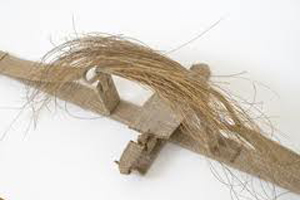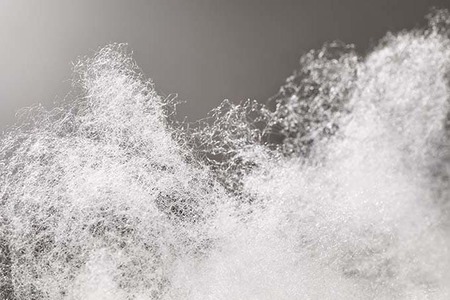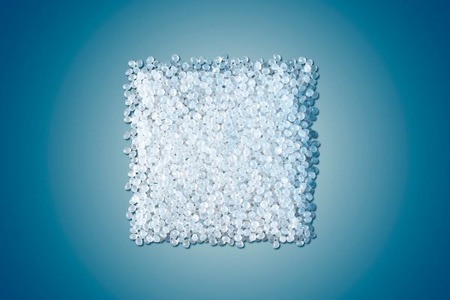
Textile fibres from wood to be the next better alternative to cotton
YarnsandFibers News Bureau 2014-01-07 14:55:00 – HelsinkiResearchers at Aalto University and the University of Helsinki are working out spinning process to produce cellulosic textile fibres from Finnish wood – as an next better alternative to cotton, viscose or Tencel fibres.
The technique, called Ioncell-F, is quite similar to the Lyocell process, where wood chips are chemically digested into a wet pulp, dried and spun. Wood pulp is dissolved without derivatisation in a direct solvent, in this instance ionic liquid. The resulting cellulose solution is then spun in a dry-jet wet spinning process, so the solution is extruded through appropriate spinnerets to form multi-filaments that pass an air gap before they enter the coagulation bath. The coagulation bath consists of anti-solvent, typically water. The ionic liquid is washed away and solid cellulosic fibres form. The fibre-bundle is then taken by motor-driven godets and guided through the spinning line. The godet speed is usually a multiple of the extrusion velocity. The filaments are stretched in the air gap, up to a factor of 20. Stretching the filament thinner creates extensional stress on the cellulose solution.
Professor Herbert Sixta of Aalto University adds that this makes orientation of the cellulose polymer chains parallel to the filament axis. This high orientation also results in high strength values – up to double that of viscose – which are preserved in a wet state, unlike viscose fibres, which are considerably weaker when wet.’ The fibres are then washed, dried, crimped or, in some cases, treated with fibre finish, and cut to staple fibres.
The Ioncell fibre is very similar to a Lyocell fibre, but is stronger than viscose and has high water retention. Due to the high strength and moduli of the fibres, the material is not only suitable for the garment industry but also as a reinforcement component in composites for a variety of manufacturing sectors.
But Sixta adds that it is the environmental credentials of the process that stand out. The viscose process requires carbon disulphide and sodium hydroxide, and generates sulphur oxides and dihydrogen sulphide as by-products. Although many viscose mills in the northern hemisphere have recycling systems to avoid release of those chemicals into the environment, techniques to avoid them entering the processing chain are required. In this process, the ionic liquid that accumulates in the coagulation bath is fully recycled by evaporation. The cellulose pulp is fully transformed into fibres and all material used on the way is recycled. However, due to a pending patent application, the exact material composition and binders cannot be stated.
According to Sixta the demand in textile fibres reached 75.5mt in 2010 and is predicted to rise to 133.5mt by 2030. Due to the inherent properties of cellulosic fibres (moisture management, breathability), which cannot be met adequately by synthetic fibres, the share of natural and man-made cellulosic fibres is expected to be between 33–37% of global fibre consumption. The per capita consumption of cellulosic fibres is assumed to increase from 3.7kg to 5.4kg in 2030. Cotton production capacities, however, are no longer expandable. This so-called cellulose gap offers new opportunities for man-made fibres. Replacement of cotton by pulp-based fibres is also necessary from an ecological perspective. Cotton production consumes substantial amounts of water and requires high-grade arable land, often competing with the cultivation of aliments.
Although there is an interest from both pulp mills and textile companies, commercialisation will take 5–10 years. In the meantime, fibre-spinning equipment needs to be scaled up to study spinning of several hundred filaments. Research also needs to be conducted on small-scale spinning units in preparation for a 2–5 tonnes per day pilot plant.
Finland is famous for just three things wood exports, saunas and a mild disposition, but soon it may be equally well-known for a textile production technique.
Market Intelligence
Ask for free sample Report

experience
Customer Base
dedicated team
Countries Served Worldwide









